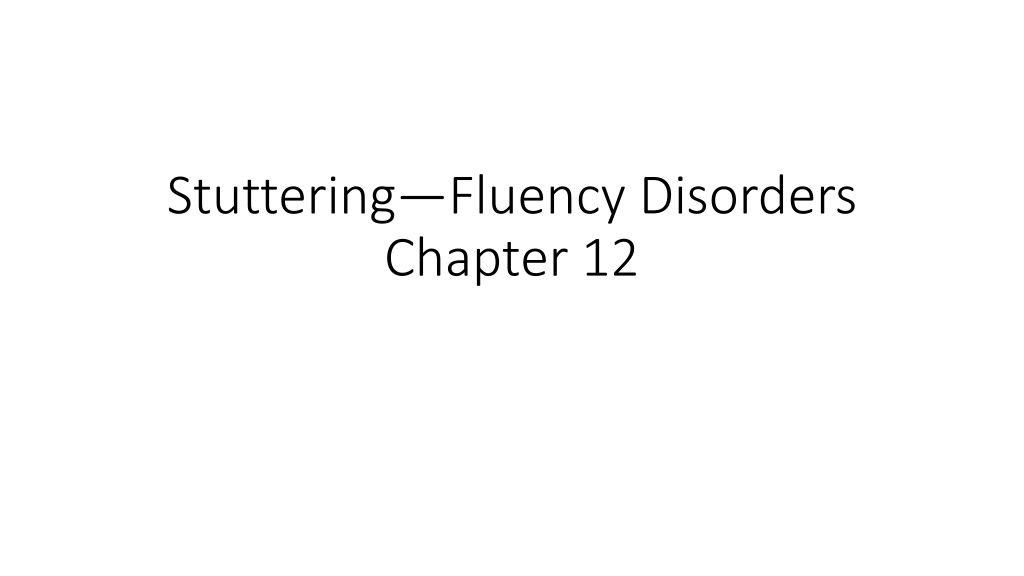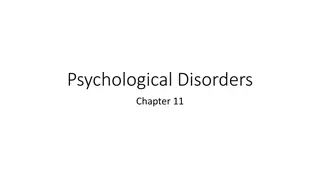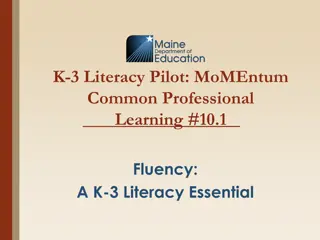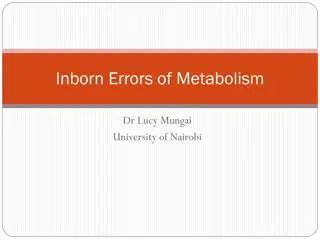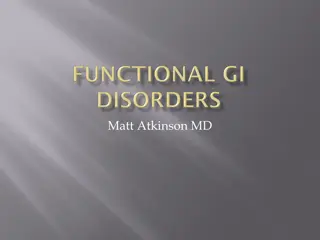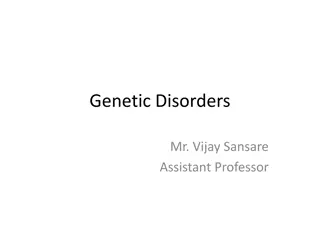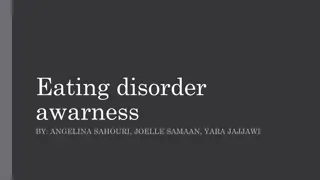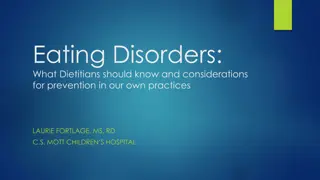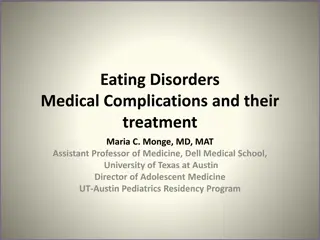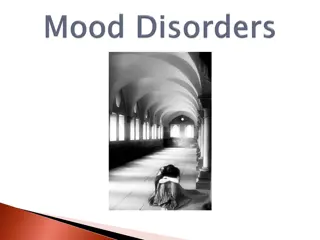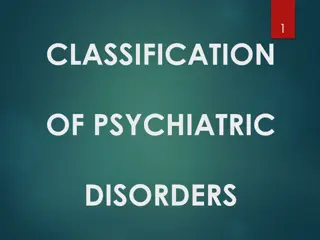Stuttering and Fluency Disorders
Explore the nuances of stuttering and fluency disorders, from definitions to evaluation and treatment approaches for children, teens, and adults. Discover insights on cluttering, typical disfluency, risk factors, and other key facts related to stuttering. Gain personal perspectives, watch informative videos, and learn about important aspects of managing stuttering effectively.
Download Presentation

Please find below an Image/Link to download the presentation.
The content on the website is provided AS IS for your information and personal use only. It may not be sold, licensed, or shared on other websites without obtaining consent from the author.If you encounter any issues during the download, it is possible that the publisher has removed the file from their server.
You are allowed to download the files provided on this website for personal or commercial use, subject to the condition that they are used lawfully. All files are the property of their respective owners.
The content on the website is provided AS IS for your information and personal use only. It may not be sold, licensed, or shared on other websites without obtaining consent from the author.
E N D
Presentation Transcript
StutteringFluency Disorders Chapter 12
Outline I. Introduction and Basic Definitions II. Stuttering Defined III. Evaluating Children with Fluency Disorders IV. Treatment for Children who Stutter V. Treatment for Teens and Adults
Information about cluttering is not on the exam: Bottom of page 291-all of 292
You dont have to know Any theories about the etiology of stuttering on pages 290-291
Kids Talk About Stuttering** https://www.youtube.com/watch?v=2Jk3AtlfWKQ
I. INTRODUCTION AND BASIC DEFINITIONS** The terms stuttering and disfluency are both used My mom stuttered and so did my sister Crystal as well as my husband Mike and son Mark Today, we encourage people to be comfortable with stuttering and not try to avoid it
Youtube: https://www.youtube.com/watch?v=zZ4XNEDSKWY Steve s Powerful and Personal Response to Stuttering
Risk Factors for Persistent Stuttering** All little kids have typical disfluencies Family history is a big red flag Time duration of 6-12 months since onset of stuttering or no improvement over several months Starting to stutter at 3 and or later Co-occurring speech and/or language disorders Child aware of/distressed by disfluencies
Other Facts** 90% of children who stutter begin to stutter between 2-6 years of age The male-female ratio is 4:1 Stuttering is especially associated with hemispheric asymmetry, including increased activity in motor centers in the nondominant (usually the right) hemisphere
When some children are learning another language:
Causes of stuttering are multifactorial** Genetics Environment Neurophysiology brain differences
Barry Guitar describes the path:** Child is born with genetic predisposition to stutter At around 3 years old, mild normal disfluencies occur If people criticize, bully, or shame the child, the normal disfluencies can worsen into stuttering
II. STUTTERING DEFINED A. Introduction
C. Visible Overt/Secondary Behaviors** Head jerks Blinking quickly Tapping the foot (my husband) pounding the hand or fist Losing eye contact Fist clenches
Stuttering often gets worse when people:** Say their own name Speak with authority figures Speak on the phone Speak in public
III. EVALUATING CHILDREN WTH FLUENCY DISORDERS** Is the child stuttering or are they at risk for stuttering? Does the child have any other communicative risk factors? (e.g., language disorder) Is therapy warranted? What therapy approach would be most beneficial?
Interviewing children** With young children: Is talking easy or hard for you? With older children and teens, ask what situations make stuttering worse What has helped you and what hasn t?
A major goal is:** Understand how the client feels about their stuttering They might not be bothered by it They might be very self conscious and fearful
One mom I worked with claimed that her son stuttered** But the teacher never heard it, and neither did we It wasn t till she brought her phone in and had us listen to a recording from home We were shocked Mom was right!
We record the number and types of disfluency** For example, a common technique is to count the % of disfluencies in a 100-word sample Does the child have mostly prolongations? Blocks? Repetitions?
How severe is the stuttering? 5 types:** 1. Normal disfluency less than 10% disfluencies in 100 words, mostly relaxed word and phrase repetitions child not aware 2. Borderline stuttering more than 10 disfluencies of various types per 100 words loose and relaxed 3. Beginning stuttering tension, hurry, rapid and abrupt repetitions, prolongations, phonatory arrest (word catches in their throat) child is aware and frustrated may have secondary mannerisms
IV. TREATMENT FOR CHILDREN WHO STUTTER** A. Primary Prevention We as SLPs help eliminate or diminish the onset and development of stuttering Usually this involves modifying conditions in the home and school
We can teach parents, teachers, siblings, and others in the child s life to:
B. Direct Therapy for Children** Be warm, accepting, calm, and easygoing Build the child s confidence I do like published fluency programs, esp. those that involve GILCU gradually increased length and complexity of utterance
Stuttering modification** Focuses more on improvement of overall communication than on fluent speech Person who stutters must recognize and confront their fears, avoidance behaviors, and struggles this is more important than being fluent Goals: spontaneous fluency, controlled fluency, or acceptable stuttering
V. TREATMENT FOR TEENS AND ADULTS** Both internal and external motivation are important Often, the person will want therapy because they feel like their stuttering is holding them back from job opportunities We need to directly interview them, paying careful attention to what situations are causing distress/anxiety Of course, we are evaluating what behaviors they are exhibiting repetitions? Blocks? Prolongations?
I worked with Jon, a teenager** Who was afraid to ask girls out because he was afraid they would make fun of him
Outline I. Developmental Disabilities II. Autism Spectrum Disorder III. Additional Considerations for Individuals with Autism Spectrum Disorder and Developmental Disabilities
Reflection There are points of view today about stuttering. POV #1: We should leave people who stutter alone. The world needs to accommodate them. POV #2: The world needs to be more accommodating true! But we should see what our clients want and focus on giving them choices of behaviors to select if they want to be fluent in certain situations. Write 3-4 sentences on which POV you support and why.
